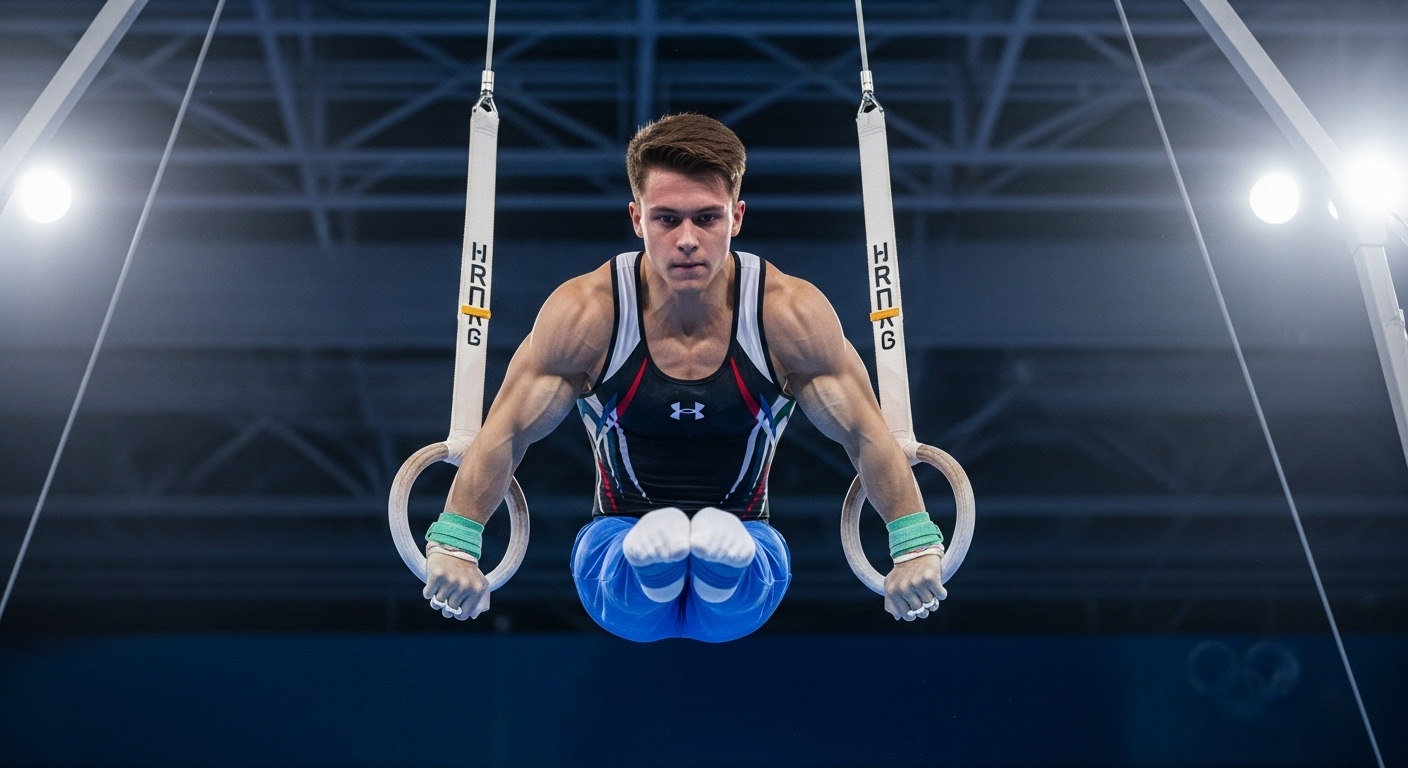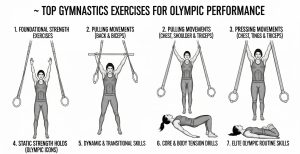The gymnastics rings are one of the most demanding apparatuses in Olympic competition. Unlike other events that rely on speed or agility, the rings test pure strength, control, and stability. Athletes like Yuri van Gelder, Arthur Zanetti, and Eleftherios Petrounias have dominated this event with their incredible muscle endurance and flawless technique.
But what does it take to perform at an Olympic level on the rings? In this blog, we’ll break down the top exercises that help gymnasts build the strength, stability, and control needed for peak performance. Whether you’re an aspiring gymnast, a CrossFit athlete, or just a fitness enthusiast, these drills will push your limits.
But then again, while these feats of strength have long been the domain of male gymnasts, the sport is on the verge of a historic shift. As we look ahead to the LA 2028 Olympic Games, there’s growing momentum for women to finally compete on the rings apparatus at the Olympic level.
This evolution makes now the perfect time to master these foundational skills. Whether you’re training to compete or simply pushing your limits, understanding these exercises takes on new significance as gymnastics redefines what’s possible.

Why Are the Rings So Challenging?
Before diving into the exercises, it’s important to understand why the rings are considered the ultimate test of strength in gymnastics:
- Unstable Base: Unlike bars, the rings swing freely, forcing athletes to stabilize their entire body.
- Brutal Leverage: Holding positions like the iron cross or planche requires immense shoulder and core strength.
- No Momentum Assistance: Movements must be controlled—no swinging or kipping like on high bar.
Now, let’s explore the best exercises to develop Olympic-level rings strength.
7 Best Exercises In Gymnastics Rings Olympics
1. Ring Muscle-Ups (The Ultimate Strength Test)
Why It Matters:
The ring muscle-up is a foundational skill in gymnastics and a benchmark for upper-body power. Olympic gymnasts use it to transition between strength holds and dynamic movements.
How to Do It:
- Start in a false grip (wrists over the rings).
- Pull explosively until your chest passes the rings.
- Transition into a dip and press up to full arm extension.
Progression Tips:
- Master strict pull-ups & dips first.
- Use resistance bands for assistance if needed.
2. Iron Cross (The Iconic Rings Strength Hold)
Why It Matters:
The iron cross is one of the most recognizable (and brutal) positions in gymnastics. It requires insane shoulder, chest, and lat strength while fighting against extreme leverage.
How to Train It:
- Assisted Cross Holds: Use bands or a spotter to reduce load.
- Negative Cross Lowers: Slowly descend into the cross to build control.
- Weighted Exercises: Dumbbell flyes and cable crossovers help build the necessary strength.
Olympic Insight:
Most elite gymnasts spend years mastering the iron cross before competing it in the Olympics.
3. Ring Planche (The Ultimate Bodyweight Feat)
Why It Matters:
The planche demonstrates total-body tension, core strength, and shoulder endurance. Only a handful of gymnasts can hold a full planche on rings.
How to Build Toward It:
- Start with tuck planche holds (knees tucked to chest).
- Progress to advanced frog stand → straddle planche → full planche.
- Strengthen with pseudo planche push-ups and handstand holds.
Did You Know?
Even Olympic medalists often perform straddle planches instead of full planches due to the extreme difficulty.
4. Ring Dips (For Lockout Strength & Stability)
Why It Matters:
Ring dips are far harder than bar dips because they force stabilizer muscles to work overtime. Olympic gymnasts use them to build pressing strength for moves like the Maltese cross.
How to Do Them Properly:
- Keep rings turned outward to engage the chest.
- Lower slowly until shoulders are below elbows.
- Press up with no wobble at the top.
Advanced Variations:
- Russian dips (for backward roll transitions).
- Weighted ring dips (add a belt with plates).
5. Front & Back Levers (Core & Lat Dominance)
Why It Matters:
The front lever and back lever are essential for ring routines, helping gymnasts control swings and transitions.
How to Train Them:
- Front Lever Progressions: Tuck → advanced tuck → straddle → full.
- Back Lever Drills: Start with skin-the-cat movements.
- Core Supplement: Dragon flags and hanging leg raises help.
Olympic Fact:
Many gymnasts integrate lever pulls into their routines for bonus difficulty points.
6. Ring Support Hold (The Foundation of All Rings Work)
Why It Matters:
Before attempting any skill, gymnasts must master the basic support hold—a deceptively tough exercise that builds shoulder stability and ring control.
How to Improve It:
- Hold for 30+ seconds with perfect form.
- Turn rings outward to engage more muscle.
- Add small swings to mimic routine transitions.
7. Ring Bulgarian Dips (For Extreme Strength Endurance)
Why It Matters:
This brutal variation increases range of motion and builds the strength needed for Olympic-level ring routines.
How to Do It:
- Lower until your hands touch your armpits.
- Press up explosively while keeping rings stable.
Pro Tip:
Only attempt these after mastering regular ring dips.
Bonus: Olympic Rings Routine Breakdown
A typical Olympic rings routine includes:
✔ Strength holds (cross, planche, lever)
✔ Dynamic elements (swings, kips, handstands)
✔ Dismount (usually a backward giant or double backflip)
Elite gymnasts must hold each strength element for at least 2 seconds to avoid deductions.
Final Thoughts: Train Like an Olympian
Mastering the rings takes years of dedicated training, but incorporating these exercises will dramatically improve your strength and stability. Whether you aim to compete or just want a next-level bodyweight challenge, the rings will push you to new limits.
Key Takeaways:
✅ Start with basics (support holds, dips, pull-ups).
✅ Progress slowly—Olympic-level strength takes time.
✅ Train consistently—rings reward patience and discipline.
Are you ready to take on the challenge? Try these exercises and see how close you can get too Olympic-level rings performance!







